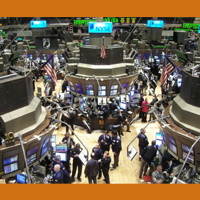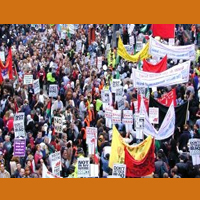PROPOSITIONS OF MANIFESTO AND BOOK
Crisis, Economics and the Emperor’s Clothes and The Common Sense Manifesto: Summary in 14 propositions
An overview of the main arguments of Crisis, Economics and the Emperor’s Clothes and The Common Sense Manifesto is given below, in the form of 14 propositions
Misguided theory
- Standard economics is a misguided attempt to capture economic reality in mathematical models. Standard economic theory, practice and policy prescriptions, derived from the model of competitive equilibrium, are based on simplifications and assumptions so far removed from reality that their use leads to a seriously distorted view of economic reality.
Poor science
2. Standard economics, rather than testing its models and assumptions against reality, treats them as universal and eternal truths. Economics’ failure to discard the core model of competitive equilibrium, in spite of overwhelming evidence it does not work, makes economics resemble faith more than science.
Economics’ maladies
3. Standards economics’ complete reliance on the equilibrium model has led to two major maladies: market fetishism and equilibrium faith. Market fetishism leads to the idolization of markets, which are seen as the only creators of wealth and the only way to solve society’s problems in an efficient manner. Equilibrium faith holds that markets naturally tend to an ideal state in which resources are allocated optimally. Neither assumption is grounded in reality, but both are decisive in formulating economic and financial policy.
Erroneous policy prescriptions
4. The failure to critically assess the model of competitive equilibrium has led to blanket policy prescriptions evolving into dogma instead of science-based advice. Economic dogma contributed not only to the 2008 crisis but also inhibits recovery, leads to growing imbalances in the economy, lays the basis for future crises, and restrains society in addressing its social and environmental problems.
Facts vs. faith
5. The economy is no more than the aggregate outcome of human decision making on economic matters. The assumption that there is an economic reality beyond this decision making, with its own dynamics and universal laws, is faith, not science. The attempt to turn economics from a social science into a “hard”, natural science by trying to express these imaginary laws in mathematical equations is misguided.
Economics: social science
6. Economics, as the study of the outcomes of human decision making, should use social science methodology for studying its subject matter. Blackboard economics should be replaced by an approach based on empirical methods, such as observation, interviewing and experiments, and inductive reasoning.
Blind spots: the growing gap
7. Equilibrium thinking has led to economists overlooking crucial developments in the economy. The main is a growing gap between economic demand (demand backed up by the capacity to pay for the desired goods and services from one’s own means) and productive capacity. The latter increases rapidly through technological development, whereas demand falls behind due to stagnating lower and middle incomes and the drive to reduce government expenditure.
How the gap has been obscured
8. Over the past decades the growing gap between productive capacity and demand has been obscured by the excessive supply and use of credit, with inflated asset values compensating for stagnating incomes. The 2008 crisis put a temporary end to this, but shortly after debt started increasing again. Without this unsustainable increase in debt there would be a prolonged and self-reinforcing downturn. Yet growing indebtedness is laying the basis for a new crisis. Mainstream economics cannot offer a way out as it is an unavoidable consequence of the financial and economic system it champions.
The speculative economy
9. Another phenomenon overlooked by economics is the existence of a financial or, a better term, speculative economy. This economy operates parallel to yet interacting with the “real” economy of the production and consumption of goods and services. The money in this financial economy is used for large scale speculation which increasing wealth in the short run, mostly for the rich. But speculative bubbles unavoidably lead to a next financial and economic crisis, the price of which is paid by society as a whole.
Standard economics: no solutions
10. Today’s economics offers no solutions to the growing gap between demand and productive capacity and therefore, no way out of society’s economic predicament. On the contrary, the mainstream economic policy dogmas of unfettered free trade, cutting taxes, freeing labor markets and downsizing government further widen the gap between productivity and economic demand. Also, these policy prescriptions result in more money being channeled into the speculative economy, contributing to further crises.
Ignoring societal issues
11. Mainstream economics focus on maximizing efficiency in resource allocation to meet economic demand makes it oblivious to key societal issues such as poverty and environmental deterioration. A new applied economics should focus on providing knowledge and tools for achieving the greatest well-being for the greatest number of people, while ensuring that the basic needs of all people, now and in the future, are met.
Money shortage and money creation
12. Equilibrium thinking and market fetishism impose an artificial shortage of money on the real economy. Money creation for use by the state is the only course of action to resolve the problem of the growing gap between productive capacity and demand, and the only way to get the economy out of the post-2007 downturn. It is also essential for developing society’s productive capacity to meet both economic demand and societal needs, notably the conversion to a green economy, creating equal chances for all and poverty alleviation.
Controlling inflation
13. Money creation for use by governments will not cause inflation if confidence in the value of money can be maintained and total demand does not exceed production capacity. Both conditions can be met if the right of money creation is given to an independent government institute such as a central bank.
Drive for change
14. If economists are incapable of rebuilding their science and reinventing their profession non-economists will have to force them to do so. This drive for change should come from a broad front of citizens with the interest of all of humanity at heart. The first step on the path to change is to challenge the validity of current economic theory and practice. The second is to open the debate on money creation by and for the State, so as to allow society to further develop its productive capacity and address its economic, social and environmental problems effectively.







